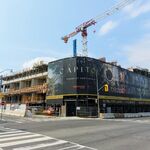Darwinkgo
Active Member
I guess a question to all you subway nuts out there:
If it runs as often as a subway, as fast as a subway, in a tunnel like a subway, and can carry close to the same amount of people as a subway, why is buying subway rolling stock and having transfers at the end of the tunnel better than buying LRT rolling stock and running through onto the in street section?
I fail to see the disadvantages of the LRT option in the above situation.
If it runs as often as a subway, as fast as a subway, in a tunnel like a subway, and can carry close to the same amount of people as a subway, why is buying subway rolling stock and having transfers at the end of the tunnel better than buying LRT rolling stock and running through onto the in street section?
I fail to see the disadvantages of the LRT option in the above situation.




